Do Shih Tzus Shed a Lot?
Are you considering bringing a charming, fluffy Shih Tzu into your home? Well, before you leap, one question might be on your mind: “Do Shih Tzus shed a lot?” This adorable breed has been known to steal hearts worldwide with its playful nature and captivating looks. However, their luscious coat also raises concerns about shedding. In this blog post, we’ll dive deep into the shedding habits of Shih Tzus – debunking myths and offering helpful insights for all potential pup parents out there. So, if you’re curious about whether these little furballs will fill your house with hair or not, keep reading!
Brief Overview of Shih Tzus
Shih Tzus, known for their friendly demeanor and luxurious coats, is a popular small dog breed. Despite their endearing qualities, potential owners often express concerns about shedding, raising questions about the shedding habits of these charming companions.
Common Concerns About Shedding
Before diving into the shedding specifics, it’s essential to address the common concerns associated with Shih Tzu shedding. Understanding these concerns lays the foundation for the information to follow.
Shih Tzus Do Shed!
Despite their fluffy appearance and reputation for being hypoallergenic, the truth is that Shih Tzus does shed. This may come as a surprise to many people who have been led to believe that these adorable dogs are one of the few breeds without a shedding problem.
The myth about Shih Tzus not shedding can be traced back to their origin in Tibet, where they were bred as palace dogs for Chinese royalty. Their long, luxurious coats are thought to have been inspired by the lion, a symbol of strength and power in ancient China. The myth about their non-shedding abilities likely arose from the fact that these royal canines were meticulously groomed and cared for by an army of servants, giving them the appearance of always being flawlessly groomed.
However, it’s important to note that grooming and shedding are two separate issues. While regular grooming can help reduce excessive shedding in any dog breed, it does not eliminate the natural process of hair loss in a healthy canine.
So why do Shih Tzus shed? The answer lies in their genetics and biology. Despite having a single coat instead of a double coat like most other breeds known for heavy shedding (such as Labrador Retrievers or German Shepherds), Shih Tzus still have hair follicles with growth cycles that follow nature’s course – growing, resting, and then eventually falling out. This means that even though their hair doesn’t fall out in large clumps like some breeds do
Introduction to Shih Tzus and Their Fur
Shih Tzus are known for their adorable appearance, round faces, big eyes, and fluffy coats. They are a small breed of dog that originated in Tibet and were later developed in China as companion dogs.
One of the most distinctive features of Shih Tzus is its luxurious coat. It is often described as soft, silky, and long, making them resemble little fur balls. However, this also leads to the common question: Do Shih Tzus shed a lot?
To understand why Shih Tzus may or may not shed a lot, it’s important first to discuss their unique fur characteristics.
Coat Types:
Shih Tzus has two different types of coats – single-coated and double-coated. The single-coated variety has just one layer of hair, while the double-coated variety has an outer layer (topcoat) and an undercoat. The topcoat is usually longer, while the undercoat is softer and thicker.
The type of coat your Shih Tzu has can significantly affect how much they shed. Single-coated Shih Tzus tend to have less hair shedding than double-coated ones because they do not have an insulating undercoat that sheds according to temperature changes.
Hair Growth Cycle:
Like all mammals, dogs go through a natural process called the hair growth cycle, where old hair falls out to make way for new growth. Different breeds
Shedding in Dogs: The Science Behind It
Shedding is a natural process in the life of most dogs, including shih tzus. This process involves the loss of old or damaged hair to make way for new, healthy hair growth. The amount and frequency of shedding can vary greatly depending on genetics, health, and environment.
The Science Behind Shedding:
To understand why shih tzus (and other breeds) shed their fur, it is important to know the science behind it. Dogs have three stages of hair growth: anagen (active growth), catagen (transition phase), and telogen (resting phase). During the anagen stage, new hairs are actively growing while old ones stop growing and begin to be pushed out by new hair follicles.
The amount and frequency of shedding in dogs is influenced by various hormones, particularly estrogen, testosterone, and thyroid hormones. These hormones regulate the length of each stage of hair growth and play a crucial role in controlling shedding patterns.
Factors Affecting Shedding:
1. Breed:
Some dog breeds shed more than others due to their specific genetic makeup. Shih Tzus are known to have a single coat of long, silky hair that grows continuously without going through a resting phase like some other breeds with double coats do. Therefore, they tend to shed less than double-coated breeds.
2. Health:
The overall health of your shih tzu can also affect its shedding patterns. If your dog suffers from allergies or any underlying medical conditions, it could
Factors That Affect a Shih Tzus Shedding
Several factors can influence the amount of shedding a Shih Tzu experiences. While this breed is known for its low-shedding coat, it is essential to note that each individual dog can vary and may shed more or less depending on their specific circumstances.
1. Coat Type:
The type of coat a Shih Tzu has plays a significant role in their shedding. This breed has two types of coats – single and double. A single coat means they only have one layer of hair, while a double coat consists of an outer and inner layer. Single-coated Shih Tzus tend to shed less than those with a double coat, as the undercoat traps dead hair and can cause excessive shedding.
2. Seasonal Shedding:
Like most breeds, Shih Tzus experience seasonal shedding, also known as “blowing coat.” This typically occurs during spring and fall when the weather changes drastically. During these periods, your Shih Tzu will naturally shed their old winter or summer coat to make way for a new one suited for the upcoming season.
3. Age:
A puppy’s first year can often bring about changes in their coat, which may lead to increased shedding during this time period. As they mature into adulthood, their sheds may become less frequent and abundant.
4. Health:
A healthy dog usually means minimal shedding, while an unhealthy one could result in excess fur loss due to stress or illness. Ensuring your Shih Tzu receives proper
How to Manage Shih Tzu Shedding
Shih Tzus are known for their long, luxurious coats, which can be a source of pride for many owners. However, this beautiful coat also comes with a downside – shedding. While Shih Tzus do shed less compared to other breeds, they are not entirely non-shedding, and it is important for owners to know how to manage this natural process.
Here are some tips on how to effectively manage Shih Tzu shedding:
1. Regular Grooming:
Regular grooming is key in managing Shih Tzu shedding. Brushing your dog’s coat at least 2 to 3 times a week will help remove any loose or dead hair and prevent it from ending up all over your house. Use a good-quality brush or comb for long-haired dogs to prevent tangles and mats.
2. Invest in High-Quality Food:
A healthy diet promotes healthy skin and coat, reducing excessive shedding. Make sure you choose high-quality dog food rich in essential nutrients like Omega-3 fatty acids, which can improve the overall health of your dog’s skin and coat.
3. Bathe Your Dog Regularly:
Bathing your Shih Tzu once every 4-6 weeks using a mild shampoo can help reduce the amount of hair they shed by removing the build-up of dirt and excess oils on their skin that can contribute to shedding.
4. Consider Professional Grooming:
If you find yourself struggling with keeping up with your dog’s grooming needs
Grooming Tips for a Fluffy, Non-Shedding Shih Tzu Coat
Shih Tzus are well-known for their beautiful, long, and fluffy coats. However, this luxurious coat also requires regular grooming to keep it looking its best. If you have a Shih Tzu with a non-shedding coat, you may wonder how to properly groom them without causing damage to their delicate fur. In this section, we’ll discuss some essential grooming tips to maintain the fluffy and non-shedding coat of your beloved Shih Tzu.
1. Start with Daily Brushing:
Daily brushing is crucial to keep your Shih Tzu’s coat in top condition. Use a soft bristle brush or a pin brush designed explicitly for long-haired dogs to avoid tangling or pulling on their hair. Be gentle when brushing, and start from the roots before moving toward the ends of the fur. This will help prevent any knots or mats from forming.
2. Use Detangling Spray:
For tangles that are difficult to remove with just brushing alone, you can use a detangling spray specially formulated for dogs like Shih Tzus. Spritz it on the tangled area and let it sit for a few minutes before gently working through the tangles with your fingers or brush.
3. Pay Attention to Problem Areas:
Shih Tzus tend to have longer hair around their ears, paws, and underbelly, which can easily get matted if not regularly brushed out. These areas need extra attention during grooming sessions so as not to create uncomfortable
Tips for Allergy-Prone Individuals
A.Hypoallergenic Considerations:
For individuals prone to allergies, Shih Tzus is often considered a hypoallergenic breed. This section will explore what makes them suitable for allergy-sensitive homes.
B.Keeping the Living Environment Clean“
Maintaining a clean living environment is crucial for both the Shih Tzu’s well-being and the comfort of allergy-prone individuals. Practical tips for a tidy space will be discussed.
Coping Strategies for Pet Owners
A.Embracing Shedding as a Part of Pet Ownership
Shedding is a natural part of owning a Shih Tzu. This section aims to help pet owners embrace the reality of shedding and enjoy the overall companionship.
B.Bonding Activities to Reduce Stress
Engaging in bonding activities can reduce stress for both the owner and the Shih Tzu. This section will offer creative ideas for building a strong connection while managing shedding challenges.
Addressing Health Concerns
A.Recognizing Abnormal Shedding:
Excessive shedding may indicate underlying health issues. This section will guide pet owners on recognizing abnormal shedding and when to consult a veterinarian.
B.Consulting a Veterinarian for Potential Health Issues:
When in doubt, consulting a veterinarian is crucial. This section will emphasize the importance of professional guidance for addressing health-related shedding concerns.
C.Variations in Shedding Among Different Bloodlines:
Shih Tzu shedding can vary among different bloodlines. This section will explore how breeding practices influence shedding patterns.
Common Myths About Shih Tzu Shedding
A.Dispelling Misconceptions
There are several myths surrounding Shih Tzu shedding that need debunking. This section will address common misconceptions and provide accurate information to help owners better understand their furry friends.
B.Providing Accurate Information
Accurate information is essential for being a responsible Shih Tzu owner. This section will provide facts to counter common myths and ensure that expectations align with reality.
Shih Tzu Shedding vs. Other Breeds
A.Comparisons with Other Small Breeds
Shih Tzus are not the only small breed dogs, and shedding habits can vary. This section will compare Shih Tzu shedding with other small breeds, offering insights into breed-specific differences.
Understanding Breed-Specific Shedding
Each breed has unique shedding characteristics. Understanding how Shih Tzus compares to other breeds helps prospective owners make informed decisions based on their preferences and lifestyle.
Testimonials and Personal Experiences
A.Stories from Shih Tzu Owners
Real-life experiences from Shih Tzu owners provide valuable insights. This section will feature testimonials, anecdotes, and personal stories, offering a relatable perspective on the joys and challenges of Shih Tzu ownership.
B.Real-Life Shedding Anecdotes
Sharing specific shedding anecdotes can help new and prospective owners relate to the experiences of others. This section will include stories about overcoming shedding challenges and building strong bonds with Shih Tzus.
Future Trends in Shih Tzu Care
Advancements in Grooming Technology
The world of pet care is ever-evolving, and this section will explore the latest grooming technologies and tools that can make Shih Tzu care more efficient and enjoyable for both owners and their furry companions.
Research on Coat Health and Shedding Prevention
Ongoing research in the field of pet care is shaping the way we understand and address shedding. This section will discuss emerging trends and breakthroughs in coat health and shedding prevention.
Conclusion
Recap of Key Points:
In conclusion, understanding Shih Tzu shedding involves recognizing the unique aspects of their double coat, managing shedding through grooming and proper care, and debunking common myths. It’s essential for owners to embrace shedding as part of the Shih Tzu experience.
Emphasizing the Uniqueness of Each Shih Tzu’s Shedding Experience:
Every Shih Tzu is an individual with its shedding patterns and personality. Emphasizing the uniqueness of each Shih Tzus shedding experience encourages owners to appreciate the diversity within the breed.
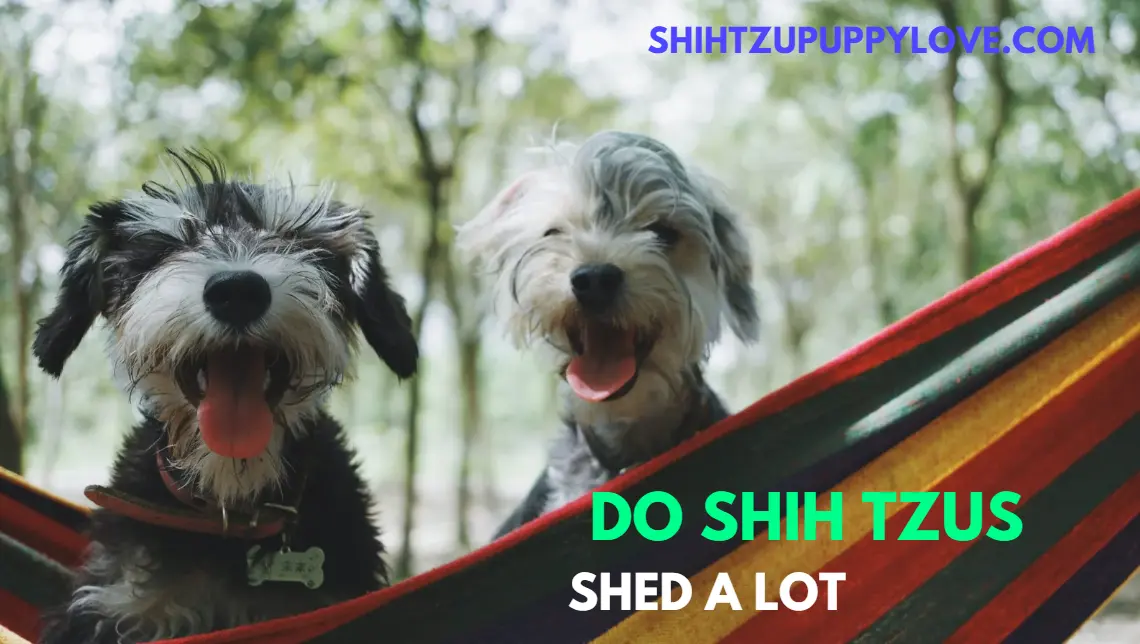


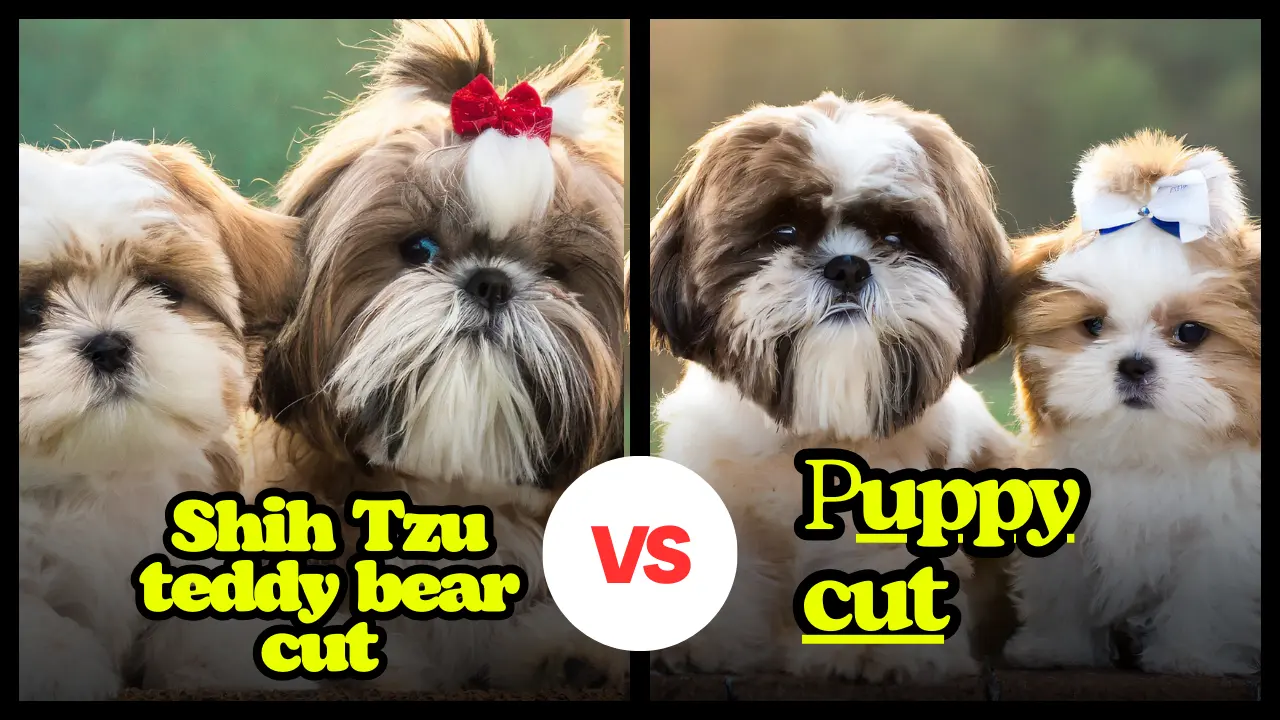
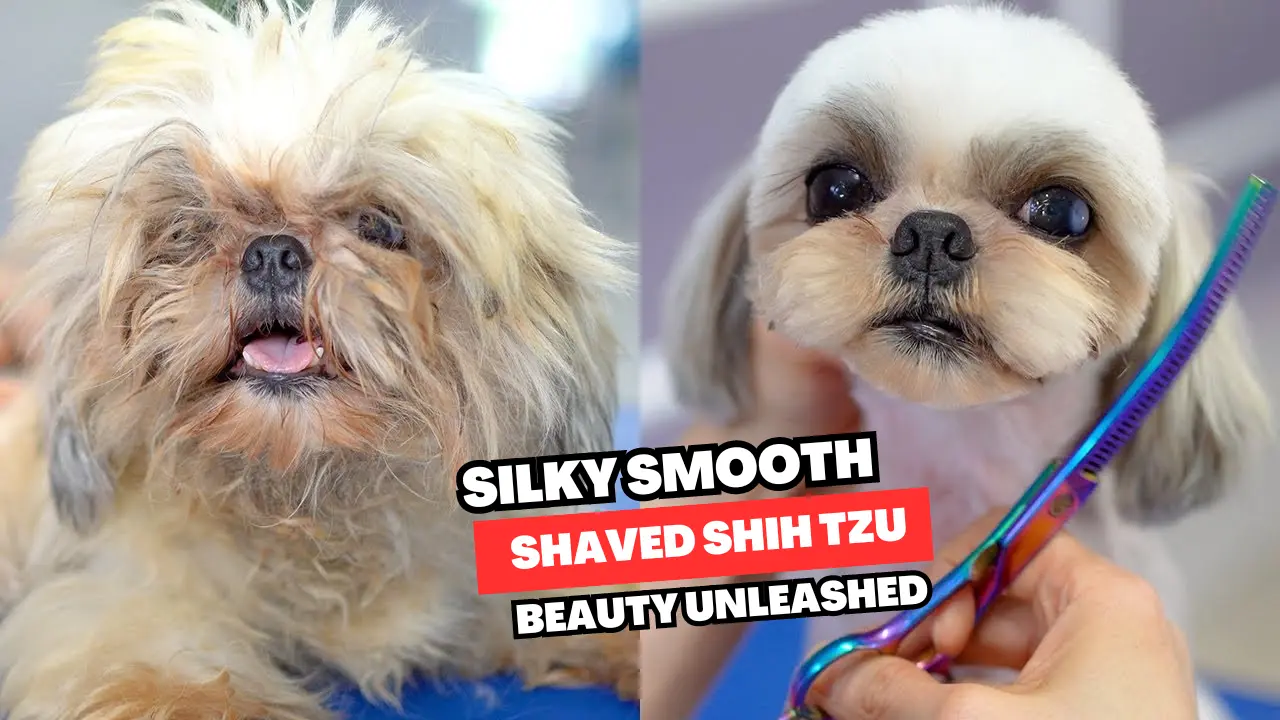
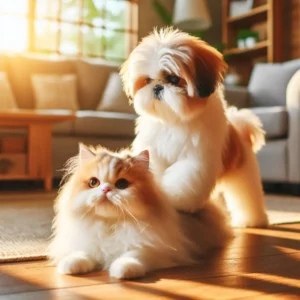


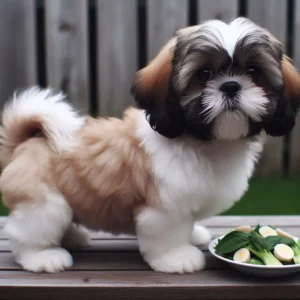
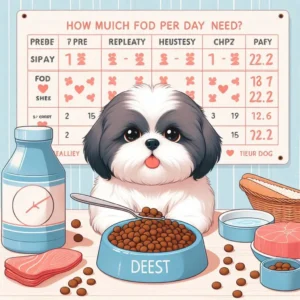



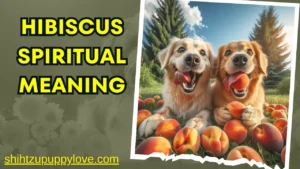

Post Comment